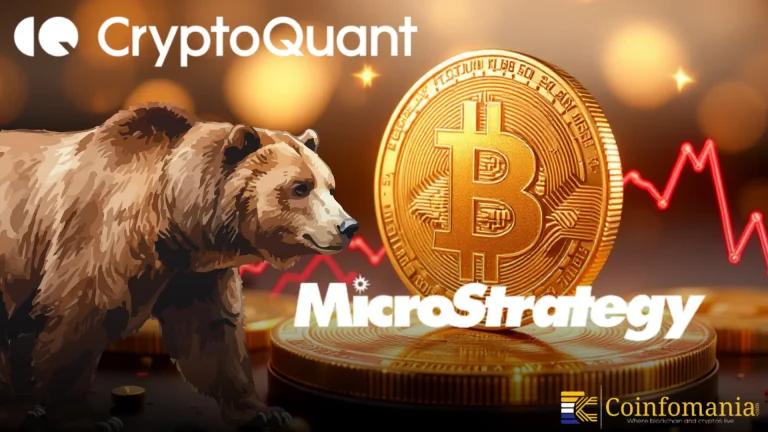Aavechan Founder Marc Zeller Previews Aave Umbrella Upgrade in 3 Days, Featuring High Yields and Auto Bad Debt Management
Dive into the Aave Umbrella update as Marc Zeller highlights the shift to aToken staking and automated risk management features.

Quick Take
Summary is AI generated, newsroom reviewed.
Aave Umbrella update introduces aToken staking, allowing users to stake aTokens for risk coverage
New system automates slashing events based on pool deficits, reducing governance intervention
AAVE rewards distribution reduced to improve efficiency, with rewards adjusted based on liquidity levels
On June 2, Marc Zeller shared that Aave will enable a major upgrade in three days. The upgrade is called the Aave Umbrella update and focuses on risk management. It will introduce a new model that improves safety and user rewards. Users will stake their aTokens, such as aUSDC or aUSDT, to support protocol security. The system will also update rules for reward distribution and slashing logic. All changes aim to make the protocol safer and more efficient than before.
Aave Umbrella Introduces aToken Staking
The current safety module uses staking of AAVE tokens and Balancer LP tokens. This module covers bad debt by relying on those staked assets. Under the Aave Umbrella update, users can use aToken staking capability instead. Staked assets will align directly with tokens in Aave pools to cover deficits. Slashing will now trigger automatically based on pool deficit data from smart contracts. Governance votes will no longer decide slashing events in most cases. This change aims to simplify risk coverage and reduce manual intervention by governance.
The Umbrella update also changes stkGHO dramatically and brings a revised rewards system for stakers. A new Rewards Controller contract will manage the distribution of incentives for staking. Each StakeToken may receive rewards in up to eight different assets, including stablecoins. The system adjusts reward rates dynamically based on total staked asset values. When staked assets fall below target liquidity, rewards increase to attract more staking. As liquidity nears the target reward, emissions taper off to manage the budget effectively. This design seeks to balance incentives and control spending under changing conditions.
Token Logic founder, Matthew Graham, also reacted to Marc Zeller’s statement and Aave’s upcoming change. He noted in his X post that pre-Umbrella stkGHO will become a proxy sGHO product with ~7% yield from GHO Emissions. It will have a current size of 170M, no cooldown, no slashing risk, and no AAVE emission. Current stkGHO holders will earn risk-free yield with no lockup. The premium relative to sUSDS will dilute as deposits grow. Post-Umbrella stkGHO will target 12M TVL and 10% yield with lockup and slashing.
New Tokenomics Model Aims for Long-Term Sustainability
A key feature of the Aave Umbrella update is the introduction of StakeTokens per asset. StakeTokens represent each user’s staked position in the Umbrella safety mechanism. They carry a slashing risk if deficits occur in the linked pools. A 20-day cooldown period remains before users may withdraw staked assets. A two-day withdrawal window follows after the cooldown period ends. Automated processes use real-time data to handle risk coverage and slashing. This approach gives stakeholders flexibility while improving protocol safety measures. Users can track their StakeToken balances through the updated user interface.
The upgrade also brings changes to AAVE tokenomics to reduce token emissions. Under the new model, AAVE reward distributions will be significantly reduced. Aave DAO will pair reduced emissions with continued buybacks to support value. The goal is to limit treasury spending and improve long-term sustainability. These shifts aim to maintain a risk-adjusted rewards mechanism for safety participants. A tokenomics review will help ensure efficient use of protocol resources. Overall, these changes seek a balanced approach to rewards and protocol health.
Aave Umbrella Update Enhances Transparency and Risk Management
From a technical perspective, the Umbrella update includes a full suite of smart contracts. An updated user interface will let users stake assets and claim rewards easily. Guidelines for activation are published along with thorough audits by external firms. All codebases are open and available for public review on Aave DAO repositories. The protocol remains decentralized, with governance guardians and rewards managers overseeing operations. This design supports transparency and community oversight throughout the risk management process. Users can access detailed information about each contract and system component if desired.
Aave Updates Tokenomics to Support Sustainable Growth
The Aave Umbrella update introduces more automated and data-driven risk management. By using aToken staking capability, the system reduces reliance on manual governance decisions. Risk coverage aligns with actual token deficits, improving capital efficiency on the protocol. Adjustments to AAVE tokenomics aim for sustainability and reduced spending pressures. The system balances user participation incentives with budget constraints effectively. Transparency and community oversight remain central to Aave’s evolving risk strategy. Users can expect a safer protocol with clear rules and dynamic responses. These changes reflect a newsworthy shift in decentralized finance risk management practices.
Follow us on Google News
Get the latest crypto insights and updates.


